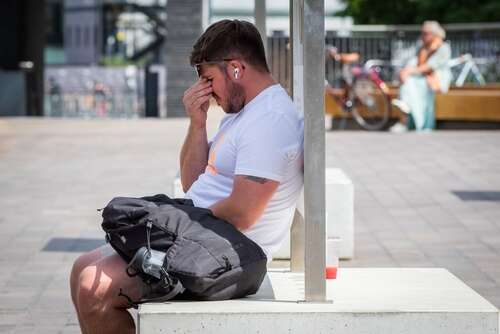
In a recent study conducted by global sustainable development consultancy Arup, it has been revealed that London is home to one of the most extreme urban heat islands in the world. The report highlights the UK capital as the fourth most intense urban heat island “hot spot” among six major international cities, where urban temperatures surge a staggering 4.5°C higher than their rural surroundings.

The urban heat island phenomenon arises when cities replace natural landscapes with heat-absorbing materials like asphalt and concrete, leaving inadequate green spaces and water bodies to counteract the rising temperatures. Coupled with heat generated by traffic, air conditioning and human activities, this has led to a dramatic temperature disparity between urban and rural areas.
Utilising AI technology and satellite imagery, Arup’s Urban Heat Snapshot identified the most extreme hot spots across a 150km2 sample of diverse cities including Cairo, London, Los Angeles, Madrid, Mumbai and New York. Through its digital analytics tool UHeat, researchers were able to discern variations in air temperatures experienced across different neighbourhoods on the hottest day of 2022 in each city.
Urban heat island study results
The study revealed that Mumbai faced the second most severe urban heat island “hot spot” with temperatures surging by 7°C, while New York witnessed comparable hot spots of 4.5°C. The report calls attention to the role of city design in exacerbating urban temperatures, as nature gets pushed aside for concrete streets and towering steel-and-glass structures.
In most cities, areas with the highest temperatures had minimal vegetation cover (below 6%), whereas the coolest zones (with over 70% vegetation cover) were predominantly found in parks, away from commercial and residential areas.
This phenomenon has led to stark temperature disparities within cities. For instance, in London, the Kilburn and South Hampstead area, boasting 38% vegetation cover, experienced temperatures over 7°C hotter than Regent's Park, where 89% of the area is covered in vegetation.
Cities are already grappling with escalating temperatures due to climate change, and the report warns that the number of cities exposed to extreme temperatures (above 35°C) is predicted to triple by 2050. This trend is already proving deadly, with the European Health Institute attributing more than 61,000 deaths to extreme heat in Europe alone in 2022.
What's more alarming is that three of the studied cities, including London, experienced the most severe urban heat island "hot spots" during the evening and nighttime hours. Urban heat tends to linger into the night due to heat-absorbing materials like cement slowly releasing heat after sundown. This poses critical health risks, especially for vulnerable populations like children and the elderly.
In London's study area, the urban heat island effect meant that nearly a quarter of a million elderly individuals and children faced heat spikes of 4°C compared to rural surroundings. A grim prediction suggests that by 2100, the risk of death from excessively hot nights could increase six-fold compared to 2016.
[Read more: How can London adapt to hotter summers?]






